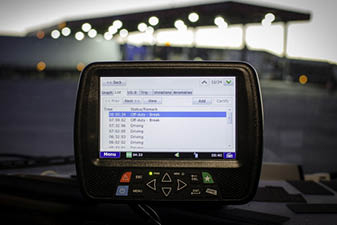|
By Dean Croke, DAT Solutions
U.S. cellular providers have started to sunset their 3G networks, beginning with AT&T on Feb. 22. The term “sunset” indicates there’s daylight remaining but in this case it means a large portion of the trucking industry may be in the dark when it comes to ELD network connectivity.
ELDs are electronic logging devices, which are required by the Federal Motor Carrier Safety Administration (FMCSA) to automatically record driving time for hours-of-service compliance. By December 2017, when the FMCSA mandate took effect, many popular ELDs used the 3G network to communicate data.
Sunset in succession
One by one, mobile carriers are shutting down their 3G networks this year to make room for more advanced services. After AT&T on Feb. 22, Sprint 3G (T-Mobile) will close its network on March 31; Sprint LTE (T-Mobile) on June 30; T-Mobile 3G on July 1; and Verizon 3G on Dec. 31.
Any ELD that requires 3G cellular connectivity to function “will no longer be in compliance with the technical specifications in the ELD rule after the 3G network it relies on is sunset,” FMCSA said.
“When in an area that does not support 3G, a 3G device will register a malfunction,” the agency explained. “In accordance with 49 CFR 395.34, the carrier has eight days to get the malfunction resolved, in this case by replacement, unless an extension is granted.”
The transition has ramifications for carriers from Canada and Mexico, as both countries have delayed their 3G sunsets to mid-decade. Fleets using 3G devices from these countries will no longer be able to transmit or receive data between drivers and dispatch while in the United States, even though their home country considers them compliant.
What does this mean for truck fleets and their customers?
If drivers are unsure their ELD relies on a 3G network, they should immediately contact their provider and ask about their plan for upgrading or replacing the ELD device to one that will be supported after the 3G sunset.
It won’t be easy. Or quick.
Getting a new ELD can be tricky at a time when supply chains are stopped-up and there’s a global chip shortage. The truck owner has to place an order from the ELD provider, wait for new hardware
|

to arrive, and then take the truck off the road while new hardware is installed.
Too late already
Some ELD and telematics providers have been proactive in letting their customers know that they have 3G-reliant devices that will soon stop working. “It’s almost too late already,” according to Steven Dwight, Senior Vice President of Business Development at TruckX, a provider of fleet management services and ELDs. “Lack of planning, procrastination and a late-adopter mindset will put carriers in big trouble.”
Another disruption
The 3G sunset puts more than hours-of-service data on the line. Trucks and trailers may have a range of 3G telematics devices that collect and communicate data for optimized routing, managing fuel efficiency and tracking the condition of components on the vehicle.
The 3G to 4G transition also comes at a time of tremendous constraints on truckload capacity.
DAT’s Truckload Volume Index (TVI), an indication of the number of loads moved during a given month, hit 229 in January. That’s a 3.8% decline compared to December but the highest-ever TVI for January and a 15% increase year over year. At $3.11 per mile, the national average spot rate for dry van freight increased 11 cents compared to December and was 99 cents higher year over year.
Disruptions due to port conditions, winter weather and COVID-19 have helped push rates to historic levels and tightened the availability of trucks. Shippers, 3PLs and freight brokers should be actively talking to their carriers about whether ELD connectivity could compromise the availability of their equipment.
Dean Croke is the lead industry analyst at DAT Freight & Analytics, which operates the industry’s largest digital marketplace for truckload freight, and the DAT iQ data analytics service. For information, visit dat.com.
|

